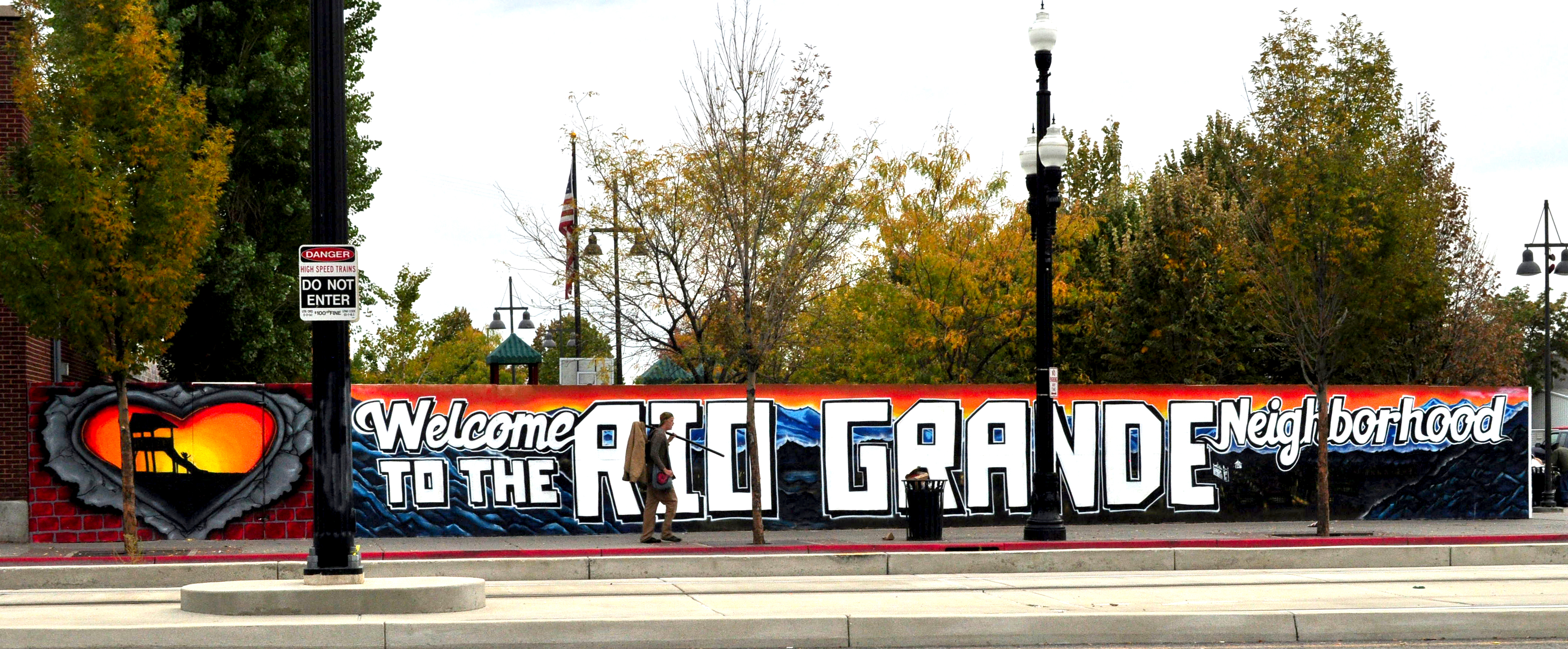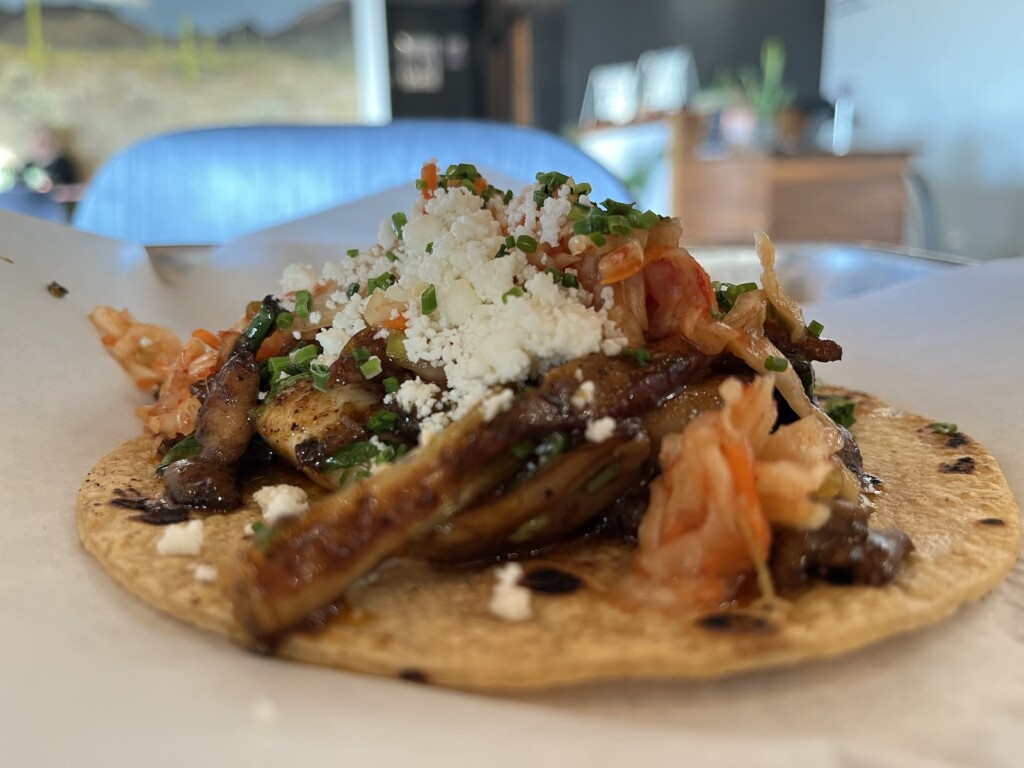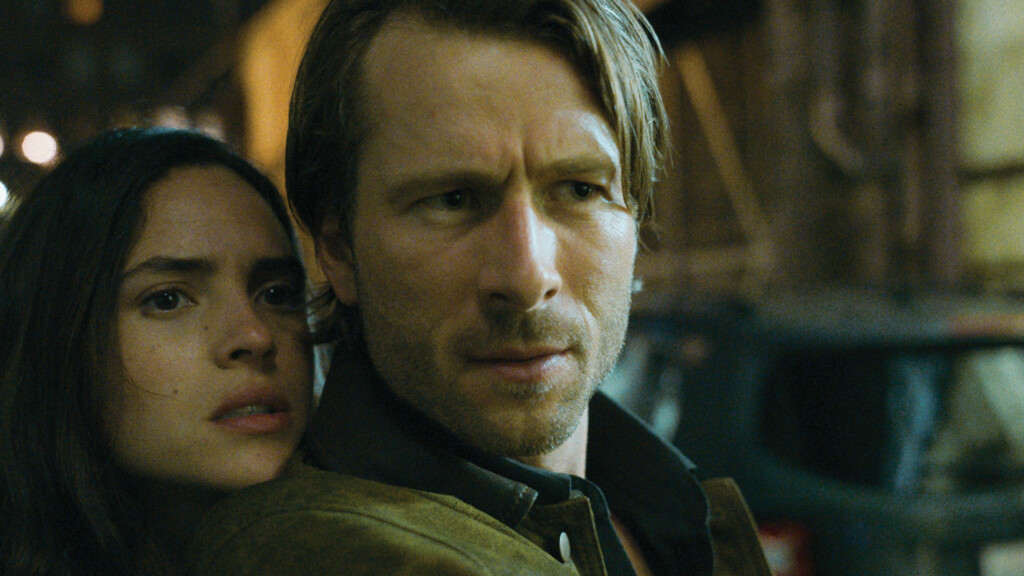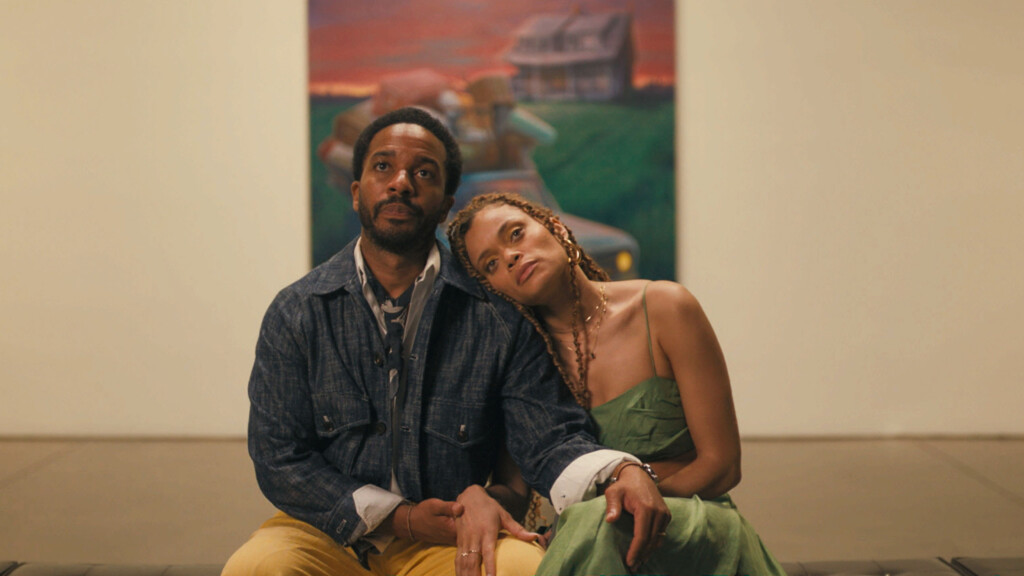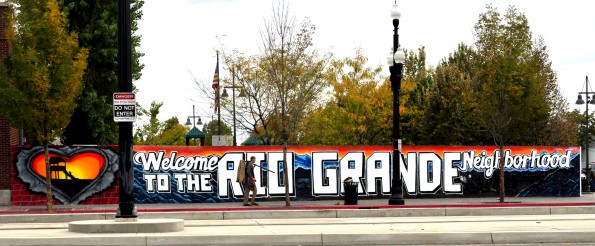
The corner of 200 South and 500 West is a hotbed of drug dealing activity where incidents of violent crime also periodically occur. This same corner is also the location of The Road Home shelter’s playground. Recently, a team of hired and volunteer staff erected and painted a 450-linear foot fence on the property’s most exposed corner.
Before the construction of the 8-ft.high plywood fence, kids playing on the inside of the chain link perimeter could witness heinous criminal activity on the sidewalk and street.
The blatant narcotics trafficking in this area continues to be a social and civic problem, but the fact of the new fence has created an immediate enclosed sanctuary. The structure is a functional barrier, a canvas for permanent and alternating community art, and also, project manager Chris Peterson says, “a loud and clear message that the city’s decision makers and The Road Home care.” Chris, also the Director of the Sorenson Unity Center, has a BFA in painting so his professional goals include combining “the need to create art and the need to contribute to the community.
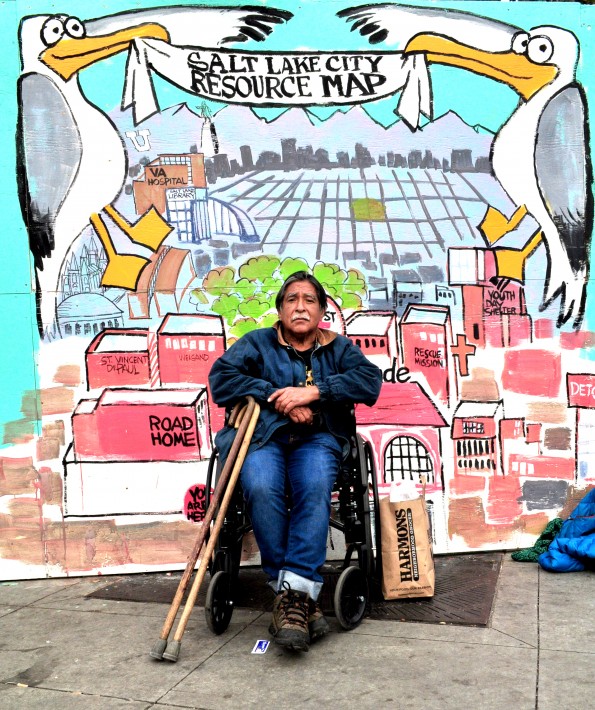
A collective of artists and volunteers designed and painted the outside of the fence. Vibrant colors enliven the city corner that has tolerated years of odious conduct. The energetic contrast is palpable and the cynic may question the intended effect, but from seeds of altruism positive change can grow. “This project is one that’s helped show the potential of art to activate a space and change the whole feel of a street,” Chris Peterson says, “Community art has a different impact on a neighborhood.” Community involvement nurtures an inclusive investment in a project.
Wrapped around the corner in bold block letters, the message reads, “Welcome to the Rio Grande neighborhood. Hope for the future gives us strength for today.” The words are the mural’s most prominent visual element, in part because the project was guided by realistically conservative money and time constraints. A northeast panel depicts a heart-shaped opening in a brick wall. On the other side of the wall, silhouetted against a sunset, are children playing on a slide. Local artists, including notable Utah cartoonist Pat Bagley, contributed time and talent to different sections of the fence. And central to the mural’s labor intensive completion were the efforts from Justin Johnson’s NVS FAM painting crew.
The plan for the fence’s interior walls is to provide the opportunity for art therapy. Shelter residents will be able to create scenes on the now blank panels, an event that Chris hopes will give individuals a creative “sensation of freedom.” In addition to the new fence, the facility has improved the play structure area, and future plans include the city’s Youthworks program building community garden boxes in the outdoor space.
Funded by the City of Salt Lake, The Road Home and in-kind donations, The Road Home never turns families away. The shelter has 31 family rooms, serving hundreds of children, newborn to age 18. The facility in Midvale will help accommodate the seasonal winter overflow of occupants.
Chris anticipates that the highly visible community art project will “put The Road Home on the map for residents of the city. Attracting attention from other parts of the city is important,” he adds, noting a pervasive social attitude that the population served by the shelter are perceived as “untouchables.” “If I wasn’t doing this work,” he admits, “I’d be one of those out of sight, out of mind people. For me, what’s most important is recognizing that we’re all brothers and sisters in humanity.”

